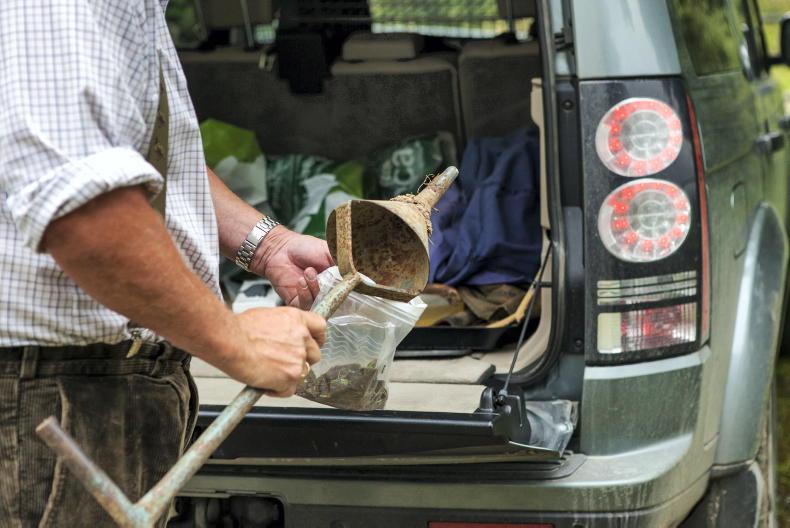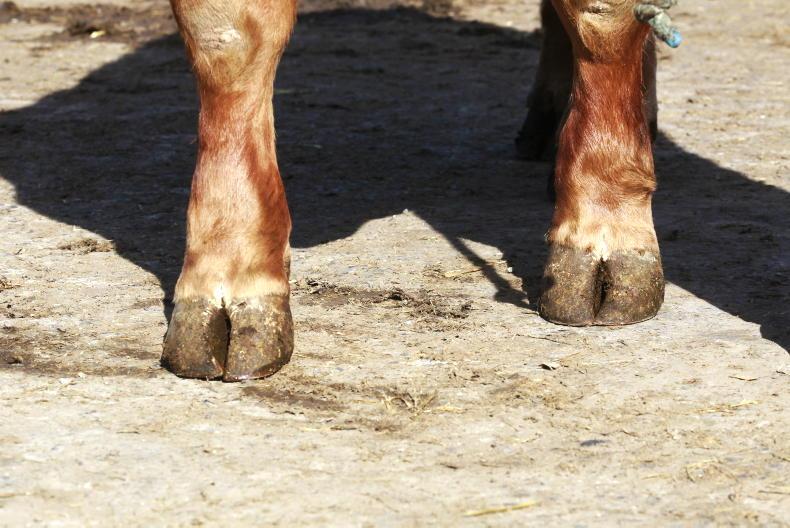I’d better get my disclaimer in early, before some forward-thinking shepherd reads this article and evaporates on the spot.
I believe that improved genetics in sheep breeding have the potential to significantly raise the bar across all aspects of lamb production.
A lot of hard work has been done all over the UK and Ireland by the likes of the Agri-Food and Biosciences Institute (AFBI), or the Agriculture and Horticulture Development Board (AHDB), to show the benefits of using performance-recorded rams (EBVs).
Improved lamb performance is the real winner, with (depending on which data-set you study) AHDB showing there is an extra £4 per lamb to be had, or AFBI’s more circumspect figure of a reduction to slaughter by 10 days.
The Texel breed is more overt in their claims, with a superior terminally indexed ram benefiting the lucky purchaser by up to £7.81 per lamb.
Dark ages
So, how come I am trawling around in the dark ages, a Neanderthal farmer buying ewes and rams with no available figures or historical insights? Am I allowed to ask a few questions?
For example, why were there less than 8% of the ram lambs at both the Texel and Charollais premier sales with performance figures? And, presumably, the true percentage for either breed is much lower than this, when you consider the number of breeders who don’t sell at those illustrious sales?
Breeders will (quite rightly) point out that buyers are still locked into an appearance mentality, and it may not be financially beneficial to go through all the rigmarole of testing.
Challenge
Everyone will have their reasons and justifications for whatever class of livestock they buy. Convincing them to change their ways is probably the biggest challenge for any development taskforce.
Just like everyone else, I have my own set of rules too, and getting me to shift away was always hard – and it’s possibly getting harder. But why?
In a nutshell, I suspect years of experience may be the main contributing factor in most of my decision-making with replacement sheep. For instance, I’m wary of spending too much money on ram lambs, since some of us have seen them melt away during their first winter on a commercial farm.
And could an independent body, such as CAFRE, show us consistent sets of benchmarking data from working farms that highlight the improved gross margins from genetically superior stock? Because that sort of thing will convince a lot more working farmers than reams of published material.
Outbreak
Here’s another question that constantly bothers me: if someone (ie, me) happens to be a very bad farmer, what effect does this have on those well-bred and genetically advanced stock?
Does an outbreak of nematodirus or coccidiosis hit those better lambs less hard?
This line of quizzical rumination strikes at the very heart of so much agricultural experimentation: the difference between practical farming where things often go wrong, and a controlled situation – I’ll explain further.
Limitation
On this farm, the biggest limitation on lamb performance is not the quality of the ram used, or the bloodlines on the maternal side. It is absolutely determined by how much Derek has messed up, and by adverse weather conditions.
In dry years, a lack of quality grass severely limits the physical performance of fattening lambs, while in a wet year, underlying coccidiosis issues can wreak havoc with daily liveweight gains. Nematodirus and other gastrointestinal parasites have frequently contributed to subdued weight gains too.
Or, to put it another way, if someone told me I had to go and pick a showy fat lamb out of a neighbour’s field and use him as a terminal sire, I wouldn’t be unduly worried.
I admit this is a negative viewpoint in the eyes of some people, but I am merely trying to make a point, and I wonder how many other farmers have ever thought along these lines.
Traction
I sincerely hope the futuristic breeding of genetically superior sheep gains real traction, and, more importantly, can be seen to improve the bottom line on all commercial farms. And since I’ve been asking questions throughout this article, I’d like to ask just one more.
I agree that improved, or genetically superior sheep, are a big step up from lower indexed stock.
But how do you convince an individual farmer that their newly purchased ram or ewes aren’t already up there with the very best? Now, there is a challenge.
Read more
Investment in genetics gives quick return
Watch: farming with townies in the countryside
I’d better get my disclaimer in early, before some forward-thinking shepherd reads this article and evaporates on the spot.
I believe that improved genetics in sheep breeding have the potential to significantly raise the bar across all aspects of lamb production.
A lot of hard work has been done all over the UK and Ireland by the likes of the Agri-Food and Biosciences Institute (AFBI), or the Agriculture and Horticulture Development Board (AHDB), to show the benefits of using performance-recorded rams (EBVs).
Improved lamb performance is the real winner, with (depending on which data-set you study) AHDB showing there is an extra £4 per lamb to be had, or AFBI’s more circumspect figure of a reduction to slaughter by 10 days.
The Texel breed is more overt in their claims, with a superior terminally indexed ram benefiting the lucky purchaser by up to £7.81 per lamb.
Dark ages
So, how come I am trawling around in the dark ages, a Neanderthal farmer buying ewes and rams with no available figures or historical insights? Am I allowed to ask a few questions?
For example, why were there less than 8% of the ram lambs at both the Texel and Charollais premier sales with performance figures? And, presumably, the true percentage for either breed is much lower than this, when you consider the number of breeders who don’t sell at those illustrious sales?
Breeders will (quite rightly) point out that buyers are still locked into an appearance mentality, and it may not be financially beneficial to go through all the rigmarole of testing.
Challenge
Everyone will have their reasons and justifications for whatever class of livestock they buy. Convincing them to change their ways is probably the biggest challenge for any development taskforce.
Just like everyone else, I have my own set of rules too, and getting me to shift away was always hard – and it’s possibly getting harder. But why?
In a nutshell, I suspect years of experience may be the main contributing factor in most of my decision-making with replacement sheep. For instance, I’m wary of spending too much money on ram lambs, since some of us have seen them melt away during their first winter on a commercial farm.
And could an independent body, such as CAFRE, show us consistent sets of benchmarking data from working farms that highlight the improved gross margins from genetically superior stock? Because that sort of thing will convince a lot more working farmers than reams of published material.
Outbreak
Here’s another question that constantly bothers me: if someone (ie, me) happens to be a very bad farmer, what effect does this have on those well-bred and genetically advanced stock?
Does an outbreak of nematodirus or coccidiosis hit those better lambs less hard?
This line of quizzical rumination strikes at the very heart of so much agricultural experimentation: the difference between practical farming where things often go wrong, and a controlled situation – I’ll explain further.
Limitation
On this farm, the biggest limitation on lamb performance is not the quality of the ram used, or the bloodlines on the maternal side. It is absolutely determined by how much Derek has messed up, and by adverse weather conditions.
In dry years, a lack of quality grass severely limits the physical performance of fattening lambs, while in a wet year, underlying coccidiosis issues can wreak havoc with daily liveweight gains. Nematodirus and other gastrointestinal parasites have frequently contributed to subdued weight gains too.
Or, to put it another way, if someone told me I had to go and pick a showy fat lamb out of a neighbour’s field and use him as a terminal sire, I wouldn’t be unduly worried.
I admit this is a negative viewpoint in the eyes of some people, but I am merely trying to make a point, and I wonder how many other farmers have ever thought along these lines.
Traction
I sincerely hope the futuristic breeding of genetically superior sheep gains real traction, and, more importantly, can be seen to improve the bottom line on all commercial farms. And since I’ve been asking questions throughout this article, I’d like to ask just one more.
I agree that improved, or genetically superior sheep, are a big step up from lower indexed stock.
But how do you convince an individual farmer that their newly purchased ram or ewes aren’t already up there with the very best? Now, there is a challenge.
Read more
Investment in genetics gives quick return
Watch: farming with townies in the countryside










SHARING OPTIONS